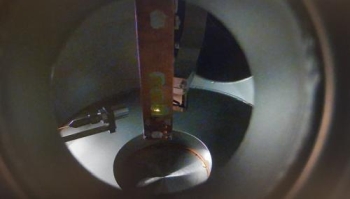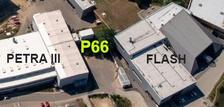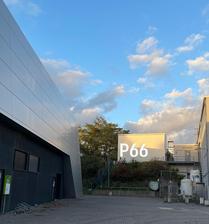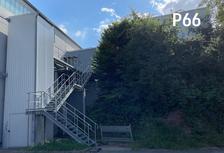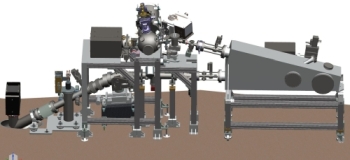The P66/Superlumi experiment setup
The users run started on September 2021.
Experiment for VUV luminescence and reflection spectroscopy
The P66 station 'SUPERLUMI' operates in the UV- VUV spectral region with pulsed synchrotron excitation in nanosecond range.
The central features of this beamline are its very large horizontal acceptance. The entrance optics consists of two mirrors for separate vertical and horizontal focusing.
The first, cylindrical mirror is located at a distance of 10.8 m from the source and accepts 12 mrad of the horizontal divergence. This gives a 3 mm wide image at the entrance slit of the monochromator.
The second (M2), plane elliptic mirror focuses the 2.2 mrad vertical divergence to 0.1 mm at the entrance slit of the monochromator. Both mirrors can be aligned by remote control.
Mc Pherson primary 2 m- long normal incidence monochromator in 15° mounting covers the UV and VUV spectral range from 3.7 eV to 40 eV. The monochromator is equipped with two holographic concave gratings (1200 groves/mm), which can be interchanged in situ. These gratings are optimized for different wavelength ranges by Pt and Al+MgF2 coatings.
The slits of the primary monochromator are manual and have widths from 10 µm to 2000 µm wich corresponds to the resolution interval between 0.01 nm and 0.6 nm.
Applications
- VUV luminescence spectroscopy
- Photon-stimulated desorption
- Time-resolved spectroscopy
P66 beamline will be mostly dedicated to time- resolved luminescence spectroscopy experiments.
The experiment setup is located in the building 47K on top of the PETRA III tunnel between of the FLASH experimental hall 'Kai Siegbahn' and PETRA III experimental hall 'Max von Laue'.







